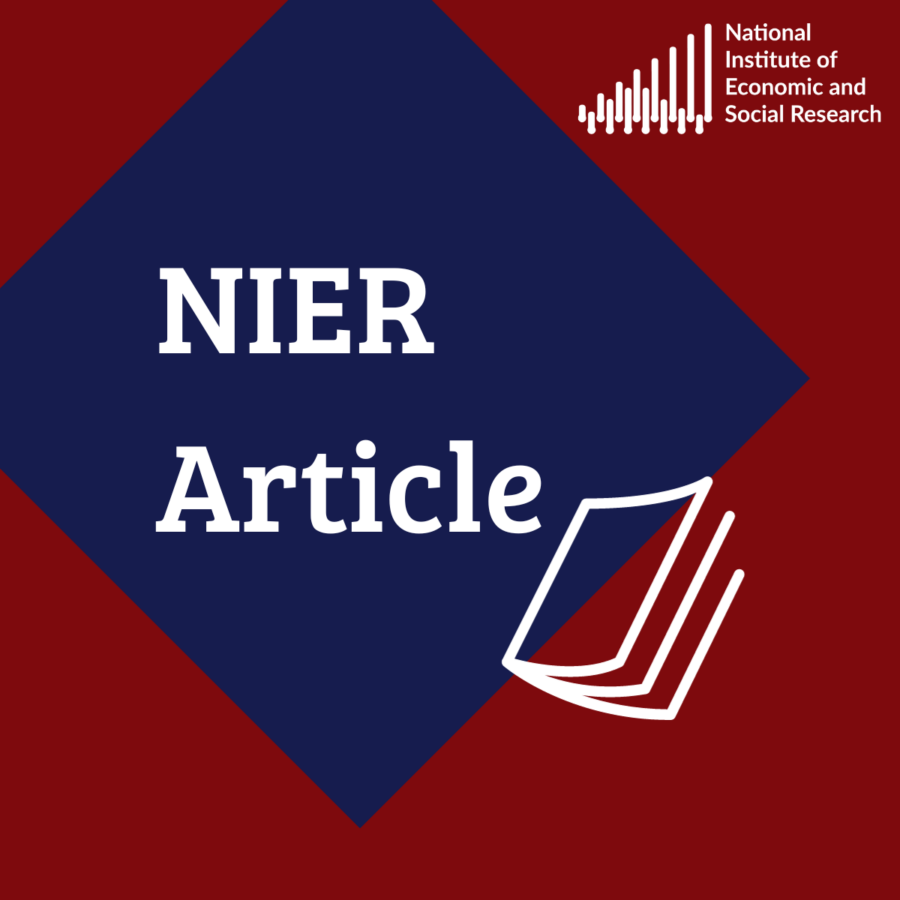Introduction: the European Union’s new member states
 Pub. Date
Pub. Date
 Pub. Type
Pub. Type

The economies of Central and Eastern Europe have undergone an extended period of transition towards market economics, leading up to the enlargement of the European Union in May 2004, when eight transition economies joined the European Union. This was followed by a second enlargement in 2007, when Bulgaria and Romania became EU members. Structural and institutional differences, and gaps in income and price levels between most of the New Member States (NMS) and the older EU members pose a set of economic issues that are specific to the NMS and set them apart from the other European Union members. In this special issue of the National Institute Economic Review, we have brought together five papers that address some of these key issues, in order to draw policy conclusions that may speed the process of real and nominal convergence, while minimising the short-term disruption to the NMS economies.
The paper by Balázs Égert in this Review focuses on nominal convergence within the EU. Price level divergence is typically explained by productivity differentials and the Balassa-Samuelson effect, whereby real wages are set in relation to productivity in the tradable sectors. Prices in the tradable sectors are set internationally and prices of non-tradables are determined by the local market. As nominal wage levels are expected to equalise across sectors, the primary source of price level differences should come from the non-tradable sector. While the NMS have exhibited large productivity growth in the tradable sectors over the past decade, Égert argues that there are a number of channels that substantially dampen the effect of productivity growth on overall inflation via market-based nontradables. The paper argues that the level of and changes in the prices of tradables may be attributable to differences in the quality or variety of goods that are produced and consumed in the catching-up economy. Knowledge spillovers from abroad, both in the form of trade and foreign direct investment (FDI), have played an important role in the convergence of income levels in the NMS towards those prevailing in the older EU members.
The paper by Martin Falk in this Review shows that foreign-owned firms have introduced significantly more products Ð both new to the firm and new to the marketthan domestically-owned firms, accelerating the introduction of market competition and increasing the variety of goods available in the market. However, Falk's work also highlights some caution in the interpretation of the benefits of FDI.
While foreign-owned firms have a higher propensity to innovate than domestic firms, this is largely attributable to the type of firm favoured by foreign investors, which tend to be larger than average. The propensity to innovate of foreign-owned firms is not significantly different from domesticallyowned firms of the same size. The author investigates the determinants of the propensity to innovate and the relationship between foreign ownership and the share of turnover with new or improved products as well as market novelties. For Eastern European firms, the results indicate that foreign-owned firms have a significantly higher share of turnover with innovative products.
The paper by Jan Babecký, Aleš Bulíř and Katerina Šmídková in this Review also highlights the importance of FDI inflows in improving external trade balances, easing pressure on the exchange rate on the road to the euro. This paper highlights some of the risks that euro adoption entails when real exchange rates are misaligned compared to their sustainable level, defined in terms of external equilibrium. If real exchange rates are misaligned, this leads to a conflict between the economy's inflation target and external stability. Babecký, Bulíř and Šmídková show that exchange rate misalignments in Poland, Hungary, the Czech Republic and Slovakia have narrowed since the late 1990s, partly driven by strong inflows of FDI, which have allowed productivity and trade balances to improve. Both Hungary and the Czech Republic risk joining at an overvalued rate, putting growth and the external balance at risk. Poland may be at risk of joining with an undervalued exchange rate, putting the inflation target at risk. Slovakia's overvaluation is expected to dissipate over the next few years, although if Slovakia were to join the Euro Area in 2009, as currently anticipated, it risks entering with an overvalued exchange rate.
The paper by David Brown and John Earle in this Review also touches on the importance of FDI to productivity growth and real convergence in the NMS. The primary focus of the paper is labour market policy in the NMS and other transition economies of Eastern Europe, particularly in relation to the creation of productive jobs. While open unemployment was negligible under central planning, productive jobs were scarce, and the transition process has required a painful restructuring of the labour market. Brown and Earle find that market reform has resulted in a large increase in the pace of job reallocation across firms, especially between sectors, which has made a strong positive contribution to productivity growth. Privatisation, particularly with foreign participation, has also stimulated job reallocation and supported productivity, wage and employment growth.
The final paper in this special issue, by Jan Babecký and Kamil Dybczak, compares labour market flexibility in the NMS to the Euro Area economies. The prospect of membership of the Euro Area which will introduce the single monetary policy, increases the importance of labour market flexibility as a tool to dampen the impact of shocks. They find a significant level of heterogeneity across countries in terms of real wage flexibility. Compared to the current Euro Area members, wage flexibility in the new member states tends to be somewhat lower than in the 'core' Euro Area countries, such as France and Germany, but tends to be higher than in some of the peripheral members of the Euro Area, such as Ireland, Greece and Spain. Bulgaria, Estonia, Slovakia and Slovenia all exhibit high levels of real wage flexibility, while Romania and especially Lithuania appear to have very inflexible labour markets. This suggests that the former group is better placed to cope with the loss of an independent monetary policy upon joining the Euro Area, assuming a similar degree of exchange rate misalignment. Of the three NMS that have joined the Euro Area already, Slovenia exhibits a very flexible labour market, while Malta and Cyprus are less flexible, but exhibit behaviour similar to that of Greece and Spain.



















